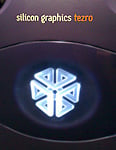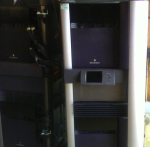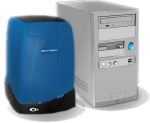I thought that since my PC110 was networking I would try to view the Origin 2000 owners manual. While I was (slowly) doing so, I scrolled over a graphic image of a deskside and when I stopped and waited for the image to load it didn't load in one chunk but in pieces.
I saw boards, connectors, doors, and a whole bunch of stuff that on a regular (and fast) computer you would not see.
Is there an ability to "explode" some images that are in PDF files that I don't know of or did SGI have WAY too much time on their hands?
I saw boards, connectors, doors, and a whole bunch of stuff that on a regular (and fast) computer you would not see.
Is there an ability to "explode" some images that are in PDF files that I don't know of or did SGI have WAY too much time on their hands?
_________________















 <-------- A very happy forum member.
<-------- A very happy forum member.












 <- MicroVAX 3500
<- MicroVAX 3500
 <- MicroVAX 3300
<- MicroVAX 3300



 <>
<>




 . aj's description rings a bell, can't check though (sgi-less)
. aj's description rings a bell, can't check though (sgi-less)
